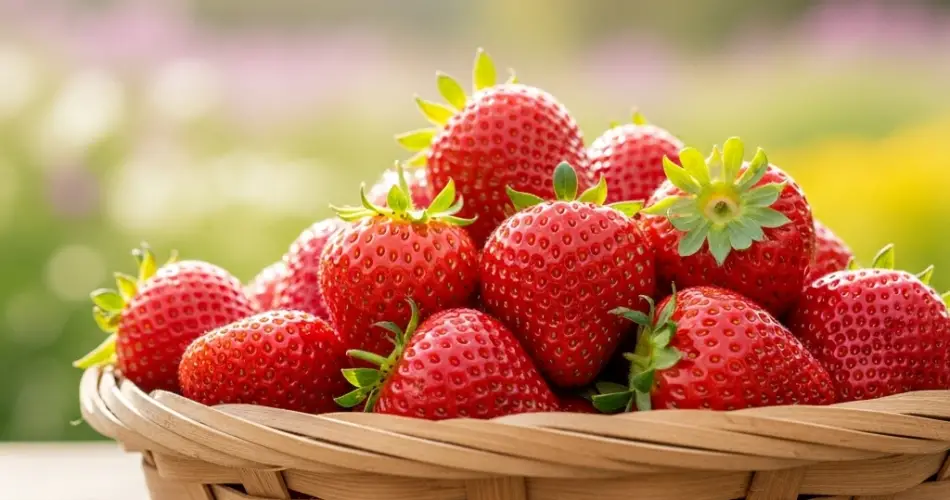Strawberries are a rewarding crop for home gardeners, offering sweet, juicy fruit and lush foliage in a relatively small space. But to keep your plants healthy and productive, proper fertilization is key. Giving your strawberry plants the right nutrients at the right time ensures vigorous growth, abundant flowering, and plenty of delicious berries.
In this guide, you’ll learn when and how to fertilize strawberries for the best results, whether you grow them in the ground, in raised beds, or in containers.
Understanding Strawberry Nutrition Needs
Strawberry plants require a balanced supply of nutrients throughout their growth cycle, including:
-
Nitrogen (N) for leafy growth
-
Phosphorus (P) for strong roots and flower development
-
Potassium (K) for overall plant health and fruit production
The timing and method of fertilization depend on the type of strawberry you’re growing: June-bearing, everbearing, or day-neutral.
When to Fertilize Strawberries
Fertilizing strawberries at the correct time is just as important as choosing the right fertilizer. Over-fertilizing can lead to lush leaves but few fruits, while under-fertilizing can result in weak, unproductive plants.
1. Before Planting (Soil Preparation)
Before planting strawberries, prepare your soil to ensure it has adequate nutrients.
-
Mix compost or well-rotted manure into the top 6–8 inches of soil.
-
Add a balanced fertilizer, such as 10-10-10 or 12-12-12, at a rate of about 1 pound per 100 square feet.
-
Check soil pH: strawberries prefer slightly acidic soil (pH 5.5–6.5).
Healthy soil sets the stage for strong root development and early growth.
2. After Planting
If planting in early spring, wait 4–6 weeks before applying additional fertilizer. This allows the roots to establish.
-
Use a light side-dressing of balanced fertilizer or a diluted liquid feed around the base of each plant.
-
Avoid direct contact with the crown to prevent burning.
For container strawberries, begin fertilizing about one month after planting using a diluted liquid fertilizer every two to three weeks.
3. Midseason Fertilization
This stage varies depending on the strawberry type:
-
June-bearing varieties benefit from fertilization after their harvest is complete. This supports strong leaf and root regrowth for next year’s crop. Use a balanced granular fertilizer or composted manure, and water it in well.
-
Everbearing and day-neutral strawberries should be fertilized more frequently during the growing season, about once a month or every 4–6 weeks. Use a balanced or slightly lower nitrogen fertilizer to promote steady fruiting.
Don’t fertilize June-bearers in early spring—this can cause too much leaf growth and fewer berries.
4. Late Summer or Early Fall (For Perennial Beds)
If you grow strawberries as perennials, a late-summer feeding helps prepare the plants for winter and improves next spring’s yield.
-
Apply compost, aged manure, or a slow-release organic fertilizer in late August or early September.
-
Mulch around plants to protect roots and conserve nutrients.
Avoid late-season nitrogen-heavy fertilizers, as they may encourage tender growth that’s vulnerable to frost.
How to Fertilize Strawberry Plants
The method you use depends on the fertilizer type and your growing setup.
1. Granular Fertilizer
-
Choose a balanced, slow-release fertilizer (10-10-10 or similar).
-
Apply evenly around the base of each plant, keeping it a few inches from the crown.
-
Lightly work the fertilizer into the soil and water thoroughly.
This method is ideal for in-ground or raised bed strawberry patches.
2. Liquid Fertilizer
-
Use a water-soluble fertilizer mixed according to label directions.
-
Apply every two to four weeks during active growth.
-
Water around the plant base rather than over the leaves to avoid fungal issues.
Liquid feeding works well for container strawberries or quick nutrient boosts during fruiting.
3. Organic Fertilizers
Organic options like compost tea, fish emulsion, bone meal, or seaweed extract can nourish your plants without synthetic chemicals.
-
Apply compost or compost tea monthly during the growing season.
-
Fish emulsion is high in nitrogen—use sparingly during fruiting stages.
-
Seaweed extract offers trace minerals and boosts plant resilience.
Organic fertilizers build soil health while feeding your plants gradually.
Signs Your Strawberries Need Fertilizer
Keep an eye on your plants for signs of nutrient deficiency:
-
Yellowing leaves (especially older ones) may indicate a nitrogen shortage.
-
Small or misshapen berries can signal poor potassium availability.
-
Weak or slow growth may result from low overall fertility.
Be cautious not to overdo it—excessive nitrogen can delay fruiting and increase the risk of disease.
Final Tips for Fertilizing Success
-
Always water after applying fertilizer to help nutrients reach the roots.
-
Avoid over-fertilizing—more is not always better.
-
Keep fertilizer away from the crown to prevent rot.
-
Adjust your fertilizing schedule if using rich compost or manure.
With a little planning and attention, fertilizing your strawberries at the right time and in the right way will reward you with plump, sweet berries throughout the season. Healthy, well-fed plants not only produce more fruit but are also more resistant to pests and disease, making your strawberry patch a thriving part of your garden.



